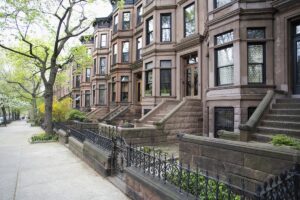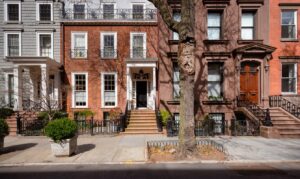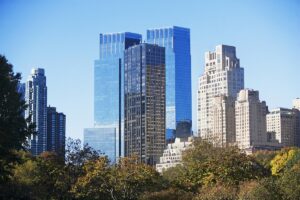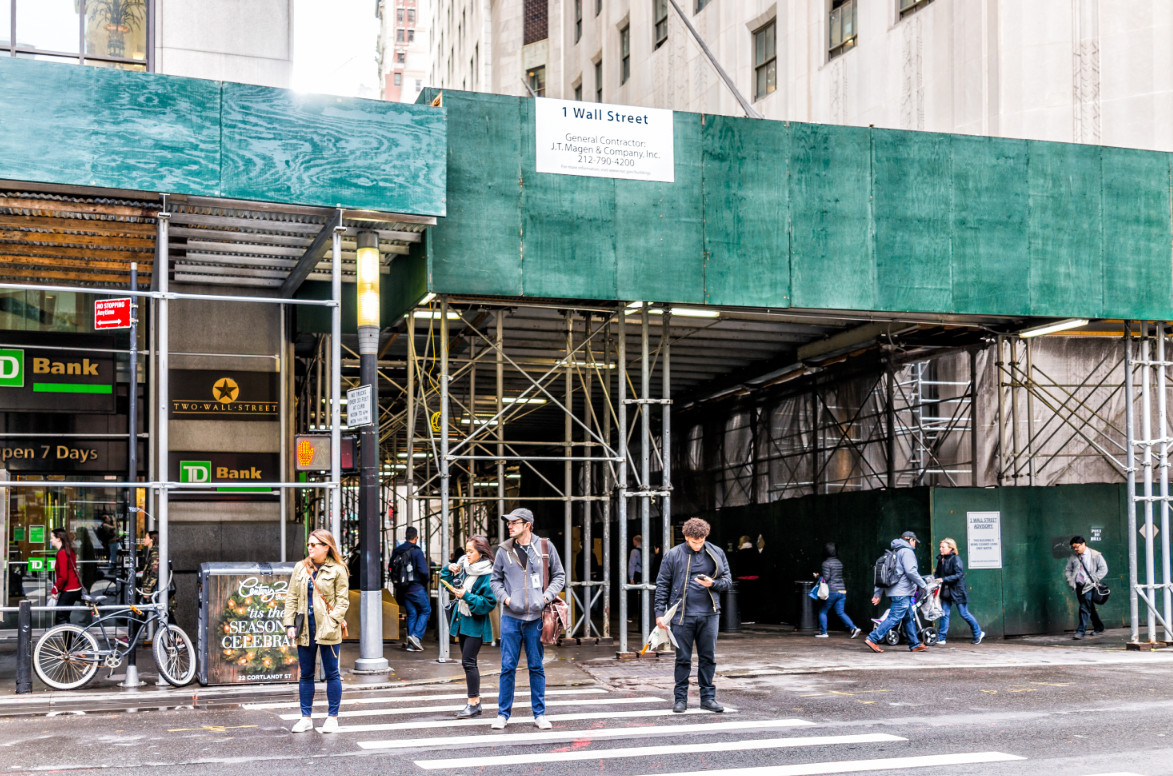
As you make your way down major streets in New York City, there’s one thing you’ll almost never escape — scaffolding, or what the city of NY calls “sidewalk sheds.” Call it an eyesore, a massive inconvenience, or a way to stay dry during a major downpour, scaffolding is part of the NYC streetscape, and that’s not changing anytime soon. It has many purposes, but the main one is protecting pedestrians from falling construction debris.
Scaffolding Around New Construction
Since the financial crisis hit in 2008, NYC has displayed all the qualities of an economic miracle. One of the main indicators of this revival has been the new residential and commercial development taking place across the boroughs. But new construction — from digging a foundation to adding those final details — can take anywhere from two to four years, or even longer if ownership changes or other delays occur.
So how does this relate to scaffolding? When new development is underway, whether starting with demolition of an existing structure or ground-up construction, there are risks — namely, that materials will come loose and fall off. Whether tools or pieces of plywood, glass or steel, falling objects can injure or kill pedestrians on the ground, so scaffolding is required to cover pedestrian walkways exposed to the construction site.
Sometimes, when sidewalks are completely impassable due to the size and scope of a construction project, scaffolding sheds will push out onto the street to provide a way for pedestrians to walk by. In other cases, signs may tell pedestrians to cross the street because there is not enough room for cars and pedestrians on the same side of the block. Given that construction isn’t slowing down anytime soon, and that projects are getting more massive, it should be no surprise that you’ll continue to see scaffolding for extended periods on the streets of New York.
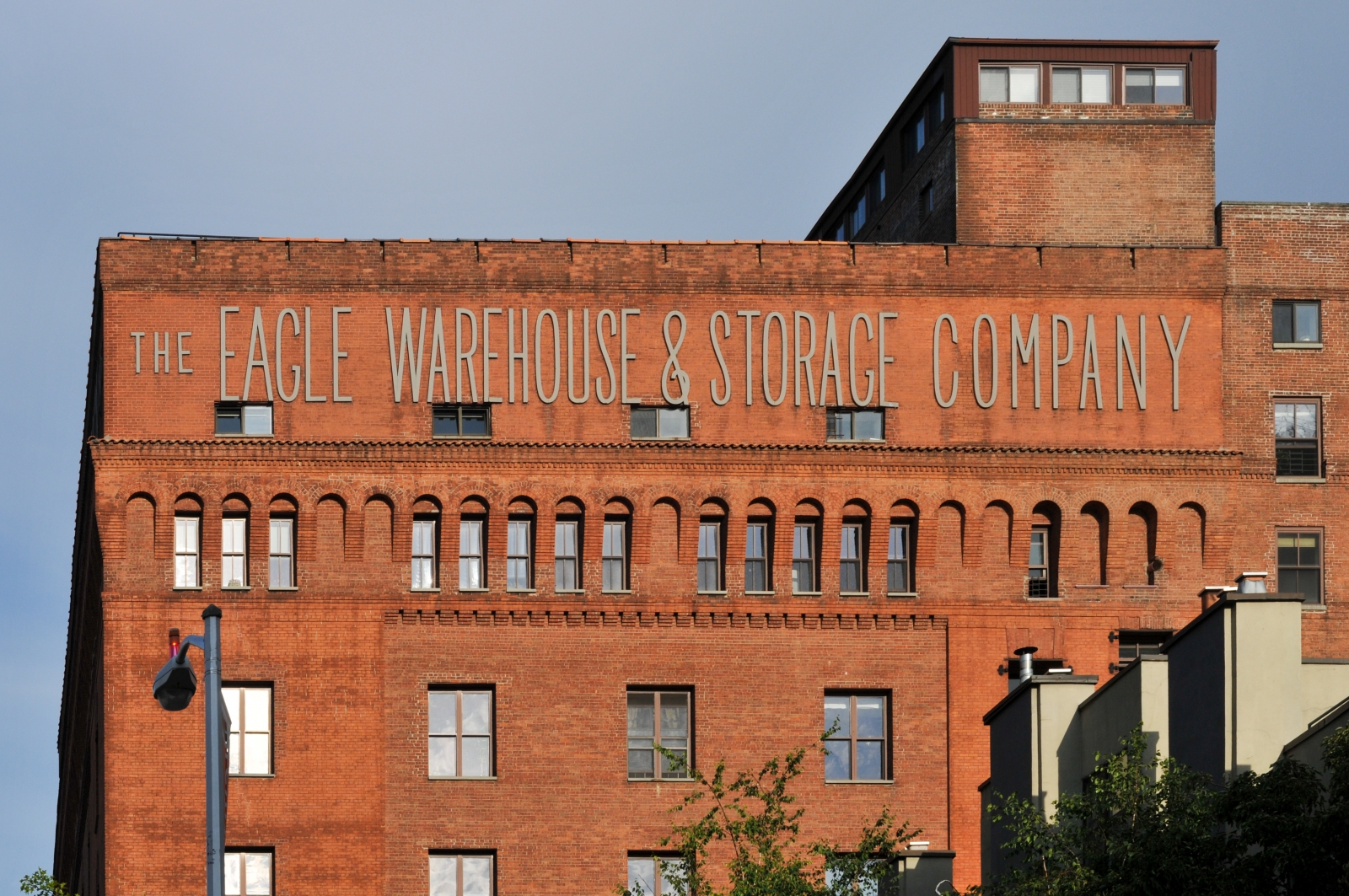
Before this building became the Eagle Warehouse & Storage Company, it was the home of the Brooklyn Eagle newspaper, where Walt Whitman was editor in the mid-1800s.
Scaffolding Around Conversions
Converting former commercial buildings into condos requires a significant amount of work. While they don’t need the same heavy-duty cranes as new construction, conversions generally get a web of scaffolding and netting in addition to their exterior construction elevators. Generally, these types of projects include facade work and new windows as well as new interior materials. Scaffolding becomes essential, given the risk of falling debris, so in addition to netting, these buildings often receive sidewalk sheds to protect nearby pedestrians.
Scaffolding and Facade Restorations
Every five years, every building in NYC must submit documentation regarding to the condition of its facade to the Department of Buildings. This documentation must be certified by an engineer, and at their discretion may require work to cure any defects. This is part of Local Law 11, which was imposed decades ago, after a loose brick fell off a building and killed a young girl. The law applies to all buildings six stories or taller. Defects can include loose bricks, cracks, deteriorating mortar, crumbling parapets, unstable balconies and more. Once the engineer has identified these defects, they will hire contractors to fix these issues. All this information goes into the facade report that gets filed with the city.
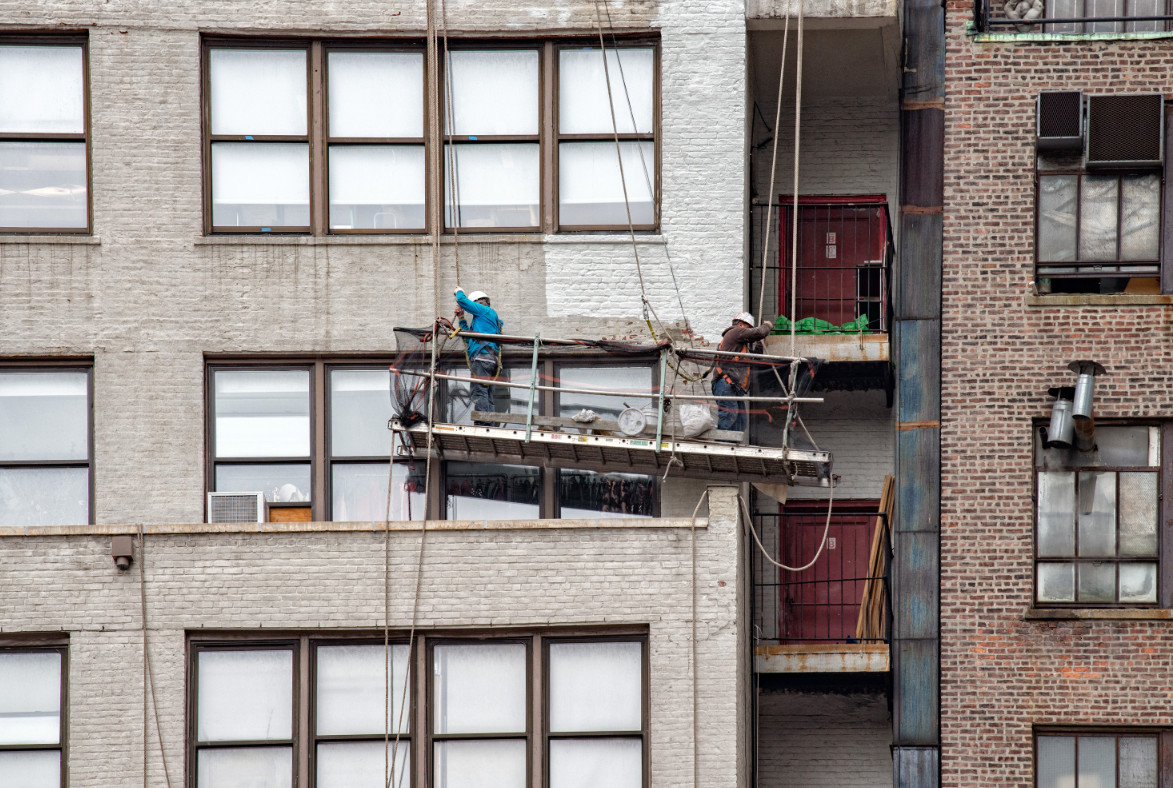
As Local Law 11 requires new filings for each building every five years, every city block will have buildings going through various stages of facade repairs — perhaps for months or even years. It all depends on the size of the building and the scope of the work required. This also creates a lot of work for engineers, contractors and scaffolding companies, and costs building owners significant sums of money. When these facade restorations take place, the exteriors of buildings are often wrapped up with netting, and sidewalk scaffolding sheds get erected.
There have been cases of building owners refusing to do the work, as renting the sidewalk sheds indefinitely and paying small fines is cheaper than a massive construction project. Given the fact that Local Law 11 requires these types of fixes on all buildings every five years, it’s no surprise that building owners, whether residential or commercial, can get fed up with the work. Newer buildings with glass exteriors will likely not need to deal as extensively with Local Law 11 as older ones.
Scaffolding Is a Way of Life in NYC
As long as there is construction happening in NYC, there will be scaffolding. There are many factors that influence the need for scaffolding, but at the core it is meant to ensure the safety of construction sites. Even with these laws, accidents occur, whether through the collapse of scaffolding or debris escaping construction sites. In one rare instance, a crane tipped over on a windy day in Tribeca and killed a person in a car. But don’t let the freak accidents scare you. This is New York City, after all: the organized chaos is truly under control, and you should feel safe passing by scaffolding.
—
Hey, why not like StreetEasy on Facebook and follow @streeteasy on Instagram?





